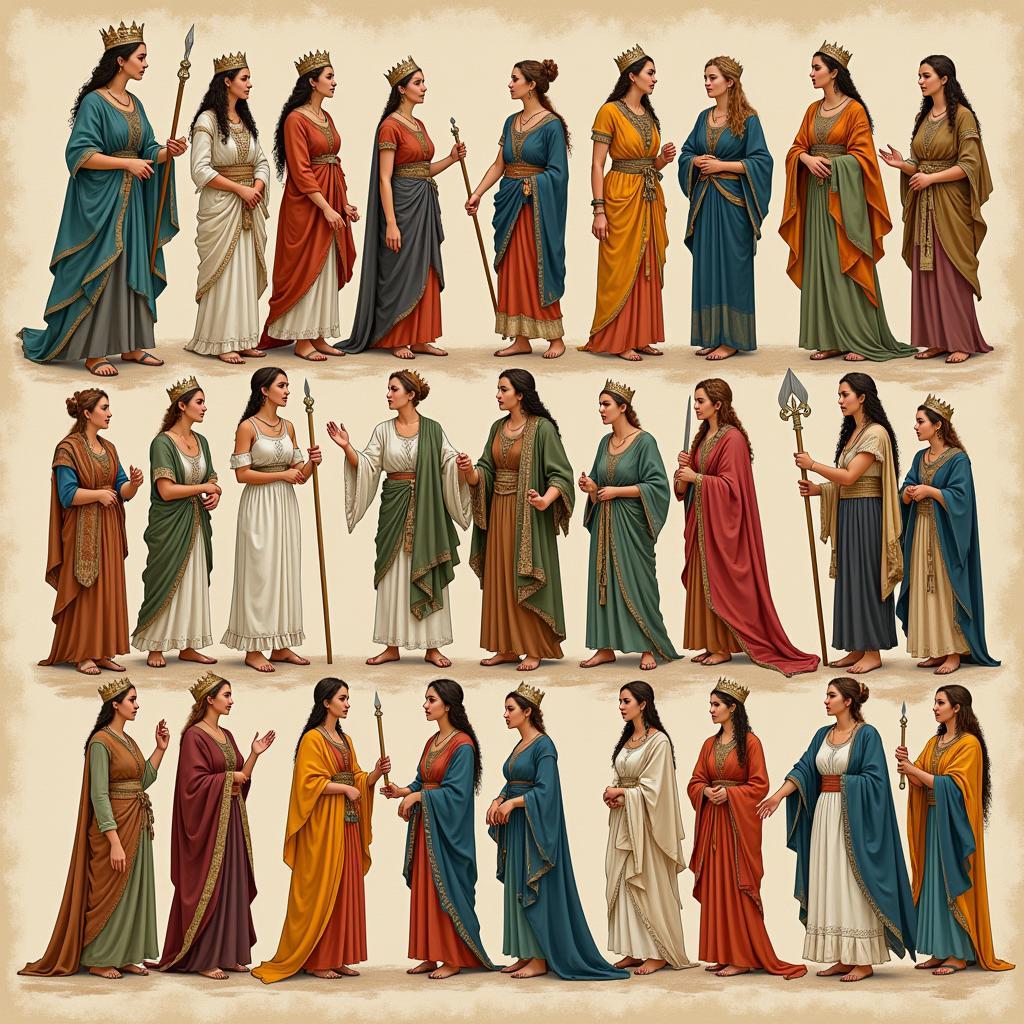A Gynocentric Society, a concept often debated and misunderstood, centers its social structures and cultural values around women. This article explores the multifaceted aspects of a gynocentric society, examining its potential benefits, challenges, and implications for achieving a more peaceful and equitable world.
Defining Gynocentrism and Its Historical Context
What exactly does a gynocentric society entail? It’s not about female dominance or the suppression of men. Rather, it refers to a social system where women’s experiences, perspectives, and needs are prioritized. Historically, many cultures have exhibited elements of gynocentrism, often linked to matrilineal societies where lineage and inheritance were traced through the female line. Understanding these historical roots provides crucial context for examining the concept in the modern world.
The concept of gynocentrism has been explored in various disciplines, from anthropology and sociology to feminist theory. It’s important to distinguish between gynocentrism as a descriptive term for societies where women hold significant social power and gynocentrism as a normative ideal advocating for a re-centering of societal values around feminine principles like nurturing, empathy, and cooperation.
 Women in leadership roles throughout history
Women in leadership roles throughout history
Potential Benefits of a Gynocentric Approach
Could a gynocentric perspective contribute to a more peaceful future? Proponents argue that prioritizing traditionally feminine values could lead to a reduction in violence, increased focus on social welfare, and a more sustainable relationship with the environment. Emphasizing empathy, collaboration, and non-violent conflict resolution could foster a more harmonious society.
Imagine a world where nurturing and cooperation are valued above competition and aggression. This is the vision some hold for a gynocentric society. By valuing traditionally feminine traits, such as empathy and caregiving, a gynocentric approach could lead to a shift in societal priorities, promoting well-being and community over individual gain.
Challenges and Misconceptions about Gynocentric Societies
What are the potential drawbacks of a gynocentric society? One common criticism is the potential for reverse sexism or the marginalization of men. It’s essential to address these concerns and clarify that a gynocentric society doesn’t necessarily equate to a matriarchy or female dominance. The goal is not to invert the power structure but rather to create a more balanced and equitable system.
Another challenge lies in the diverse interpretations of gynocentrism. What constitutes a “feminine” value can vary significantly across cultures. Therefore, a global dialogue is necessary to explore what a gynocentric society might look like in different contexts and how to avoid essentializing gender roles.
Dr. Anya Sharma, a prominent sociologist specializing in gender studies, explains: “Gynocentrism is not about reversing oppression; it’s about redefining power dynamics to prioritize values that benefit all members of society.”
Gynocentrism and the Pursuit of Peace
How does gynocentrism relate to peacebuilding efforts? A society that values empathy, communication, and cooperation is more likely to resolve conflicts peacefully. By promoting these values, a gynocentric approach could contribute to creating a culture of peace at all levels, from interpersonal relationships to international relations.
Professor Maria Flores, a renowned peace activist, notes, “By valuing traditionally feminine approaches to conflict resolution, we can create a more peaceful and just world.”
Conclusion
A gynocentric society, though a complex and often debated concept, offers valuable insights into how we might build a more peaceful and equitable world. By understanding its historical context, exploring its potential benefits, and addressing the associated challenges, we can engage in a productive dialogue about the role of gender in shaping our future. This discussion is crucial for fostering understanding and promoting positive change.
FAQ
-
What is a gynocentric society? A gynocentric society prioritizes women’s experiences, needs, and perspectives in its social structures and cultural values.
-
Is a gynocentric society the same as a matriarchy? Not necessarily. While matriarchies involve female rule, gynocentrism focuses on valuing traditionally feminine principles and perspectives.
-
What are the potential benefits of a gynocentric society? Potential benefits include increased emphasis on peace, social welfare, and environmental sustainability.
-
What are the challenges of a gynocentric society? Challenges include the potential for reverse sexism and the need for clear definitions and cross-cultural dialogue.
-
How does gynocentrism relate to peacebuilding? By valuing empathy and cooperation, a gynocentric approach can contribute to creating a culture of peace.
-
What are some examples of gynocentric societies in history? Certain matrilineal societies exhibited aspects of gynocentrism, where lineage and inheritance were traced through the female line.
-
How can we learn more about gynocentrism? Further research in anthropology, sociology, and feminist theory can provide valuable insights into gynocentrism.
Related Questions and Further Reading
- What role do men play in a gynocentric society?
- How can gynocentric principles be applied in different cultural contexts?
- Can gynocentrism and feminism coexist?
If you need further assistance, please contact us: Phone: 02043854663, Email: [email protected], or visit us at: Khu 34, Bac Giang, 260000, Vietnam. We have a 24/7 customer support team.